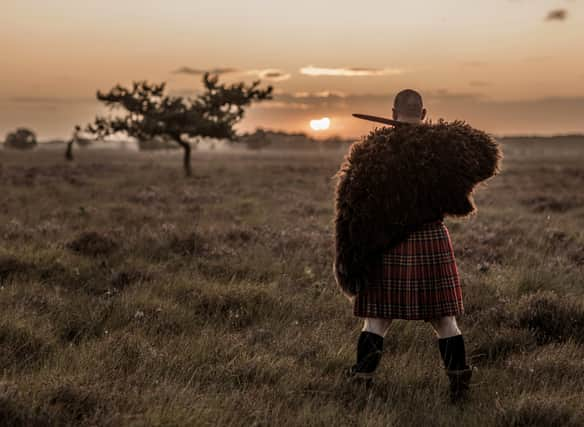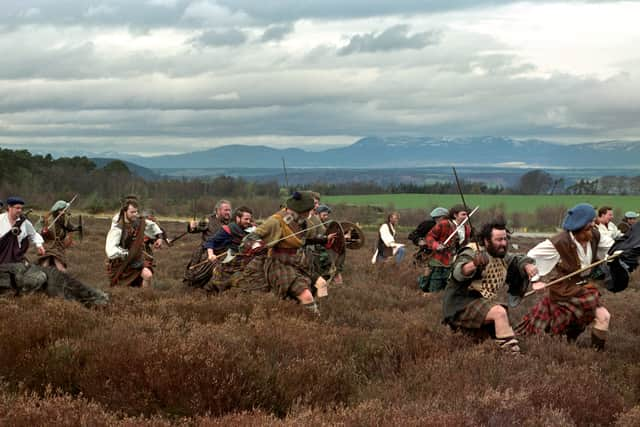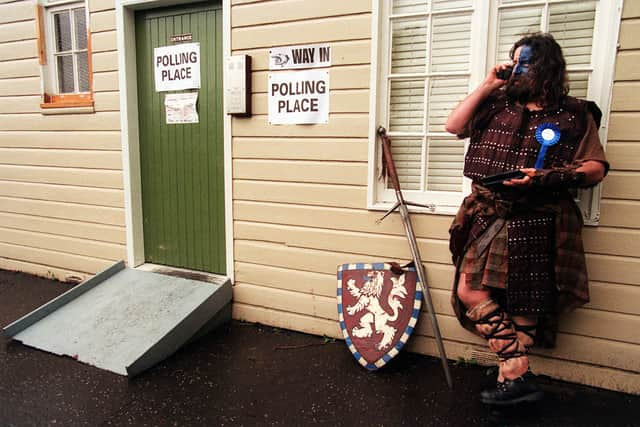Why do Scots wear kilts? The history of Scottish kilts, the custom a cut above the rest


When we think about what represents Scottish identity and history our mind instantly conjures up images of things like haggis, bagpipes, the Scots vocabulary, tartan and kilts. While they may seem like ‘stereotypes’ to some, such customs are embedded in our heritage and kilts especially are emblematic of this background particularly for the culture of the Scottish Highlands.
That said, this Highland dress is now widespread throughout the nation and can regularly be found at events like weddings, christenings, military parades and Burns Night suppers etc. As to the origins of the garment, there is (unsurprisingly) a lot of debate for where it came from as historians famously love to discourse.
Advertisement
Hide AdAdvertisement
Hide AdAs the Albanach Archive notes: “Of course, ask an Irishman, and he will tell you that the kilt was actually an ancient garment from Ireland and only later brought into Scotland by migrating Gaels, and moreover the Irish also invented the bagpipes, whisky, and whatever else you care to name.
“Ask an Englishman and he will tell you how Thomas Rawlinson, an English native, invented the kilt in the 18th century!
“Most of our ideas about the kilt are based on myth, legend, misconceptions, and (worse yet) Hollywood.”
What’s clear is that the history of the kilt in Scotland is riddled with external intervention and reinvention. Following a loss at the Battle of Culloden, the Dress Act of 1746 was implemented which banned highland dress including kilts and tartan.
It was done by the British government in response to the Jacobite uprising under the charge of Bonnie Prince Charlie in order to punish their resistance and destroy the Highland way of life. It has widely been described as an act of ‘cultural vandalism’ which is why many Scots wear the kilt proudly today as an unapologetic expression of their patriotism and heritage.
If you love Scottish kilts but don’t consider yourself a tartan virtuoso then worry not, here is an overview of the kilt’s history in Scotland and why it is such a unique and beloved garment.


History of Kilts in Scotland
The word “kilt” is said to have its origins in the Scots language as a term which means to wrap clothes around the body. Others suspect, however, that it originates from the Old Norse “kjalta” which means pleated (possible given Scotland’s heritage of vikings.)
In Scottish history, the kilt was confined to the Highlands for a long time and was widely considered symbolic of the ‘savages’ up north who wore them. Lowlanders - who form the majority of Scots - looked at the garment with contempt and labelled the Highlanders who wore them “redshanks” as a derogatory term.
Advertisement
Hide AdAdvertisement
Hide AdAccording to Highland Titles: “The first record of the Scottish kilt is from the 16th century, and this was the great kilt, the breacan or belted plaid, which was a full-length garment whose upper half could be worn as a cloak, pulled up over the head or draped around the shoulder.”
Some historians argue that the history of the kilt runs far deeper than that and to do so they reference a document from King Magnus of Norway from 1093 when he wrote of his visit to the Western Isles and how he adopted the local dress there.
It notes: “They went about bare legged having short tunics and also upper garments, and so many men called him ‘Bare Legged’ or ‘Barefoot.’”
Many seeking to corroborate the kilt’s antiquity will reference this entry but it makes no explicit reference to the garment and the description largely corresponds to another favoured dress of the Gaels from this time period; the “brat”. The ‘brat’ was a woollen cloak (or plaid) worn over a tunic.
As wool became more available in the 16th century, this cloak lengthened in size such that it needed to be gathered and belted which led to the kilt design we know today.
Lochcarron explains: “At the end of the 16th century, the kilt first appeared as the belted plaid (Breacan an Fhéilidh) or great kilt (Feileadh Mòr): a full-length garment whose upper half could be worn as a cloak draped over the shoulder or brought over the head as a hood.”
Why do Scots wear kilts?
The Scottish weather of the Highlands can be treacherous to say the least which is what begged the need of clothing like the belted plaid. It offered warmth, freedom of movement, acted as a cloak, dried quickly and could double as a blanket for the cold nights. Owing to the material that they were composed of (wool) kilts were a favourite for Scottish shepherds.
Tenon Tours reports: “Scottish shepherds needed a garment that could withstand all the elements. It had to be warm and allow for ease of movement. The style needed to allow for crossing streams and wandering throughout the countryside.
Advertisement
Hide AdAdvertisement
Hide Ad“Wool is considered one of the best natural materials for the outdoor elements. Sheep’s coats include natural oils to protect them from the weather.”
They continue: “Kilt wool (as well as other synthetics, but, hey, this is a kilt lesson) maintain their loft, or stay expanded. The little pockets, despite being wet, fill with body heat to keep the wearer warm.
“The kilt made of wool was the perfect solution to cold, wet weather.”
Nowadays, the kilt is largely worn more as a gesture of Scottish pride. Particularly when the kilt has the family tartan of the wearer, it is a means of celebrating their Clan heritage and upholding an ancient Scottish tradition.
Given the suppression of the Highland identity, which included the restriction of speaking Scottish Gaelic, for many people the kilt is a symbol of protest.
Why were kilts banned in Scotland?
In a bid to suppress Highland culture, King George II imposed the Dress Act of 1746 which outlawed the wearing of kilts. It also became illegal for Highlanders to wear tartan and it was done to quell any potential rebellions and crush their unique culture.
The ban was lifted in 1782, however, which saw Highlanders free to wear their traditional dress once again and this led to the evolution of the modern kilt in the 18th century.
Clan explains: “Instead of being a simple piece of fabric draped over the body, the modern kilt was designed to be more fitted and structured, with tailored pleats that provided a more polished and sophisticated look.”
Advertisement
Hide AdAdvertisement
Hide AdIronically, the ban ended up helping the kilt become a world-famous icon.


What is worn under kilts?
We’ve all heard the question “what does a Scotsman wear underneath a kilt?” In fact, it is one of many things that goes recommended not to say to someone from Scotland. For many, the practice of “going regimental” or “going native” (i.e., not wearing underwear) is considered the authentic custom but several studies beg to differ.
In 2016, YouGov published research into this question which revealed what Scots prefer. According to them:
“Overall, two thirds (67%) of male Scottish adults say they have worn a kilt, rising to three quarters (74%) for those born in Scotland.
“Of those who have worn a kilt, just over half (55%) say they tend to wear underwear under their kilts, whilst 38% go commando.
“A further 7% wear shorts, tights or something else.”
Comments
Want to join the conversation? Please or to comment on this article.
